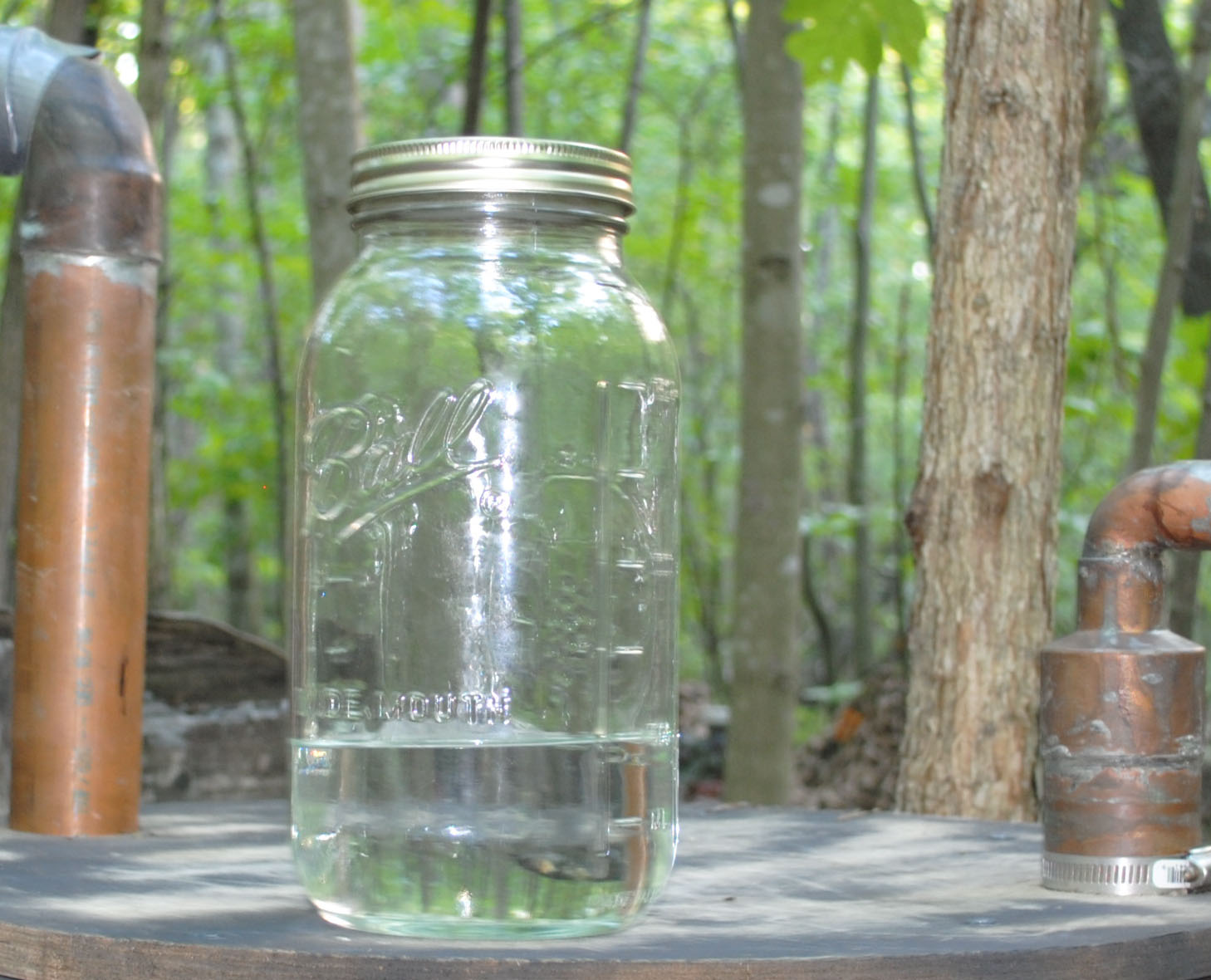History of Shine

What is Moonshine and How Is It Different From Whiskey?
Moonshine is basically any kind of alcohol that is made in secret to avoid high taxes or bans on alcoholic drinks. The term "moonshine" originated in Britain. It was originally a verb, "moonshining" which referred to any activity that was done late at night by the light of the moon. The recipe for moonshine is simply corn meal, sugar, yeast, and water. The recipe for whiskey is much the same. All moonshine or whiskey is clear when it is first distilled. The whiskey that you buy off the shelf of your local liquor store is aged for years in charred oak barrels, which gives it its amber color and mellow taste. Moonshine has no aging requirements. It is bottled and sold straight from the still, which is why it is clear and has more of a kick. You may have seen varieties of moonshine that have been mixed with fruit such as cherries or strawberries. This moonshine will have a colored appearance due to the fruit that it is mixed with.
Moonshiners, Bootleggers, and Rumrunners
Operators of illegal whiskey stills conducted their business at night to avoid detection of legal authorities, because of this they became known as "Moonshiners". Bootleggers were the people that Moonshiners hired to transport the illegal alcohol to their buyers. The term bootlegger comes from colonial times when the smugglers rode on horseback with the alcohol concealed in their tall riding boots. Bootleggers traded their horses for cars in the 1930's, 40's, and 50's. These later bootleggers developed superb mechanical skills as they modified their cars with heavier springs to support the weight of the alcohol and more horsepower to help them outrun the law. NASCAR was born out of this obsession with cars and speed. The winner of the first ever NASCAR race had used his car to smuggle illegal alcohol the week before the race. Rumrunners are basically the same as bootleggers, however, they smuggle their goods by sea, using fast vessels with hidden cargo holds.
How is Moonshine Made?
Making alcohol revolves around two processes: fermentation and distillation. Fermentation is a chemical reaction that occurs when the yeast breaks down the sugar. One result of that reaction is alcohol. Distillation is the process of evaporating the alcohol at 172 degrees and collecting the steam before condensing it back into liquid form.
Moonshine Distillation Process Step-By-Step:
- Corn is ground into meal. Today, some moonshiners use commercial hog feed because it's mostly made of corn and is easy to buy without attracting a lot of attention.
- Corn meal is soaked in hot water in the still. Sometimes sugar is added, but traditional moonshiners add malt to convert the starch in the corn meal into sugar. Then the yeast is added, which starts the fermentation process. This mixture, called mash, is stirred thoroughly and heated for a set amount of time in the still. The still and all the metal piping used are usually made of copper, which conducts heat well and will not contaminate the alcohol.
- A heat source is used to heat the mash to about 172 degrees Fahrenheit. Wood, coal and even steam have been used in the past to heat stills, but today's stills use mostly propane gas.
- At this point, the alcohol evaporates. As pressure builds in the still, the alcohol steam is forced through the cap arm, a pipe that leads out of the top of the still.
- The steam then travels into the thump keg, which is simply a barrel into which the steam is forced to the bottom. The thump keg is named after the thumping sound that is made from the steam being forced under the level of alcohol in the barrel. The proof of the alcohol steam is doubled at this point.
- The steam continues into the worm which is a coiled length of pipe that winds down the inside of the worm box. The worm box is a crate or barrel into which cold water from a nearby water source is pumped, flowing into the top and then back out the bottom. This keeps the worm bathed in constantly circulating cold water, which condenses the alcohol steam into liquid.
- The alcohol exits the end of the worm into a bucket or jar.
- Next, the moonshine is placed into a proofing barrel to equalize the level of alcohol and mix for the desired proof.
- The resulting clear liquid is ready to be bottled or jarred and sold.